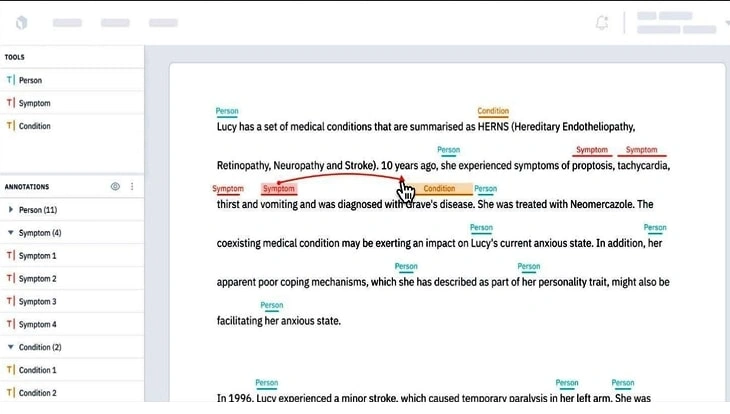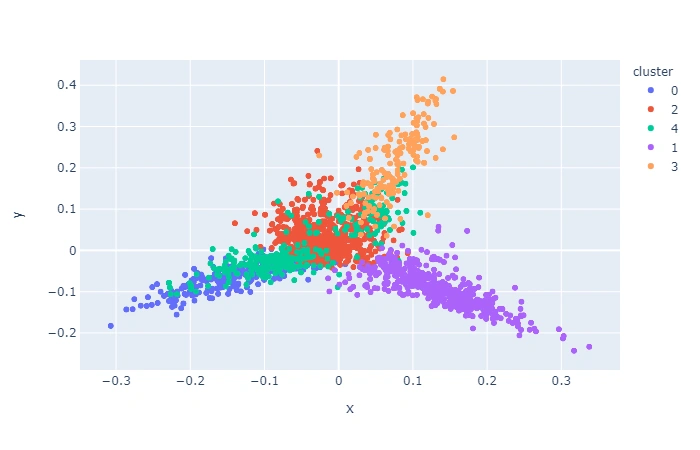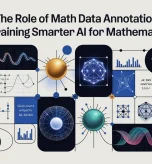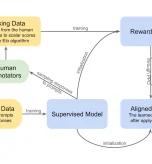Natural language processing (NLP) is one of the cornerstones of artificial intelligence (AI) and machine learning (ML). NLP aims to teach computers to process and analyze large amounts of human language data.
One of the primary applications of NLP is sentiment analysis, also called opinion mining.
Sentiment analysis classifies opinions, sentiments, emotions, and attitudes expressed in natural language. By performing sentiment analysis, a machine learning model can determine the sentiment or emotional content of a phrase or sentence.
For example, if you were to leave a review for a product saying, “it’s very difficult to use,” an NLP model would determine that the sentiment is negative.
Sentiment analysis helps businesses, organizations, and individuals to understand opinions and feedback towards their products, services, and brand.
This is a guide to sentiment analysis, opinion mining, and how they function in practice.
How Does Sentiment Analysis Work?
Sentiment analysis or opinion mining uses various computational techniques to extract, process, and analyze text data.
Our understanding of the sentiment of text is intuitive – we can instantly see when a phrase or sentence is emotionally loaded with words like “angry,” “happy,” “sad,” “amazing,” etc. However, in some cases, it might not be so simple.

For example, a sentence like “This product is very poor” is relatively easy to classify, whereas “This product has a lot of room for improvement” is relatively complex to classify.
In recent years, machine learning algorithms have advanced the field of natural language processing, enabling advanced sentiment prediction on vaguer text.
The most common techniques used in sentiment analysis are:
- Lexicon-based Approach: This approach uses a pre-built dictionary or lexicon of sentiment or emotional words assigned scores based on their polarity (positive, negative, or neutral). This is effective for texts containing specific words that directly refer to emotional states or sentiments.
- Machine Learning Approach: Machine learning algorithms are trained on a labeled dataset. The model is then used to predict the sentiment of new text data. This is much more efficient for predicting sentiment when the wording is vague or lacks explicitly descriptive adjectives like “bad, love, happy, frustrated, angry,” etc.
- Hybrid Approach: This approach combines both lexicon-based and machine-learning approaches.

Machine Learning For Sentiment Analysis
Machine learning has greatly enhanced NLP. The process of conducting sentiment analysis using machine learning models involves several processes, including:
- Data preprocessing
- Feature extraction
- Machine learning classification.
Here’s a brief description of each:
1: Data Preprocessing
The first step in sentiment analysis is to preprocess the text data by removing stop words, punctuation, and other irrelevant information.
Text is generally transformed into smaller segments, called tokens, aka tokenization.
Tokenization helps to reduce the noise in the data and makes it easier for the model to extract meaning from the text.
2: Feature Extraction
Once data is preprocessed, features are extracted from the text.
There are several techniques for feature extraction in sentiment analysis, including bag-of-words, n-grams, and word embeddings.
- Bag-of-words is a simple technique that counts the frequency of each word in the text data and represents it as a vector.
- N-grams are a more sophisticated technique that considers sequences of words instead of individual words.
- Word embeddings are a more advanced technique that uses neural networks to learn a distributed representation of words in a high-dimensional space.
3: Classification
The next step is to apply machine learning models to classify the sentiment of the text.
NLP models are pre-trained on a large corpus of text data. They’re exposed to a vast quantity of labeled text, enabling them to learn what certain words mean, their uses, and any sentimental and emotional connotations. Read more about this here.
Machine learning algorithms used for sentiment analysis include:
- Logistic regression, a linear classification algorithm that models the probability of each class as a function of the input features. This is simple and efficient and can work well with large datasets.
- Support vector machines (SVMs), which work by finding the optimal hyperplane that separates positive and negative samples. SVMs are particularly effective handle non-linear, high-dimensional data well and are less prone to overfitting than other algorithms
- Neural networks, a series of algorithms that learn both binary and multi-class classification problems. The new benchmark for modern sentiment analysis.
- Random Forests, which randomly selects a subset of features and samples from the data set to build each decision tree. The sentiment prediction is made by aggregating the predictions across all the decision trees in the forest.
- Naive Bayes is a simple algorithm that calculates the probability of classes in the input text and selects the class with the highest predictive probability.
In addition to supervised models, NLP is assisted by unsupervised techniques that help cluster and group topics and language usage.
Unsupervised Techniques
Unsupervised machine learning algorithms are also used for sentiment analysis, such as clustering and topic modeling. This enables models to discover topical and linguistic patterns and structures in text data.

Clustering algorithms group similar text samples together based on their similarity, while topic modeling algorithms identify topics or themes in the text data. This can help build the model’s lexical knowledge.
For example, while many sentiment words are already known and obvious, like “anger,” new words may appear in the lexicon, e.g. slang words. Unsupervised techniques help update supervised models with new language use. Otherwise, the model might lose touch with the way people speak and use language.
Moreover, language use differs widely across different demographics. NLP models must update themselves with new language usage and schemes across different cultures to remain unbiased and usable across all demographics. This relates to the issue of bias in speech recognition AI.
The Uses of Opinion Mining/Sentiment Analysis
Opinion mining and sentiment analysis equip organizations with the means to understand the emotional meaning of text at scale.
This has many applications in domains, sectors and industries like:
- Marketing
- Customer service
- Social media analysis
- Political analysis
- Reputational management
- Law enforcement and investigations
- Content moderation
Here’s more detail on each:
Marketing
Sentiment analysis is extremely important in marketing, where companies mine opinions to understand customers’ opinions and feedback about their products and services. They use insights to identify customer needs and improve their products.
This is also useful for competitor analysis, as businesses can analyze their competitors’ products to see how they compare. Measuring the social “share of voice” in a particular industry or sector enables brands to discover how many users are talking about them vs their competitors.
Through sentiment analysis, businesses can locate customer pain points, friction, and bottlenecks to address them proactively.
Customer Service
Similarly, in customer service, opinion mining is used to analyze customer feedback and complaints, identify the root causes of issues, and improve customer satisfaction.
Sentiment analysis can be used for both text and audio. For example, companies can analyze customer service calls to discover the customer’s tone and automatically change scripts based on their feelings.
This can be used both negatively, e.g. addressing the needs of frustrated or unhappy customers, or positively, e.g. to upsell products to happy customers, ask satisfied customers to upgrade their services, etc.
Social Media Analysis
Opinion mining monitors and analyzes social media platforms, such as Twitter, Facebook, and Instagram.
This helps businesses and other organizations understand opinions and sentiments toward specific topics, events, brands, individuals, or other entities.
Ocean Spray provides a great example of creative social media analysis. The juice brand responded to a viral video that featured someone skateboarding while drinking their cranberry juice and listening to Fleetwood Mac.
Although the video did not mention the brand explicitly, Ocean Spray was able to identify and respond to the viral trend. They delivered the video’s creator a red truck filled with a vast supply of Ocean Spray within just 36 hours – a massive viral marketing success.

Political Analysis
Similarly, opinion mining is used to gauge reactions to political events and policies and adjust accordingly.
The ability to analyze sentiment at a massive scale provides a comprehensive account of opinions and their emotional meaning.
Law Enforcement and Investigations
Sentiment analysis is used alongside NER and other NLP techniques to process text at scale and flag themes such as terrorism, hatred, and violence.
This enables law enforcement and investigators to understand large quantities of text with intensive manual processing and analysis.
Content Moderation
Sentiment analysis is essential for performing content moderation tasks at scale.
By discovering underlying emotional meaning and content, businesses can effectively moderate and filter content that flags hatred, violence, and other problematic themes.
Risk Management
Social media listening with sentiment analysis allows businesses and organizations to monitor and react to emerging negative sentiments before they cause reputational damage.
If businesses or other entities discover the sentiment towards them is changing suddenly, they can make proactive measures to find the root cause.
Example Sentiment Analysis Project
Sentiment analysis is used for any application where sentimental and emotional meaning has to be extracted from text at scale.
Now, let’s look at a practical example of how organizations use sentiment analysis to their benefit.
Suppose you are working for an electronics company that sells game consoles. The company wants to understand customers’ opinions and sentiments towards its latest console, the “ModelX.”
The following steps need to be completed:
- Data Collection: First off, the business must collect text data from various sources, including social media platforms, customer support, online forums, customer feedback, and reviews websites. You need to collect text data related to “ModelX” and its various features.
- Data Pre-Processing: Data must be pre-processed to remove noise, such as irrelevant words, stop words, punctuation, and special characters. Text normalization and tokenization, such as stemming and lemmatization, convert words into smaller segments.
- Sentiment Analysis: The third step is to perform Sentiment Analysis using a machine learning algorithm. You can perform this with an NLP library, such as NLTK, TextBlob, or Vader, to analyze the sentiment of each text data.
- Data Visualization and Analysis: Finally, sentiments are visualized using charts and graphs. Businesses can build dashboards to monitor changing sentiments over time.
While the business may be able to handle some of these processes manually, that becomes problematic when dealing with hundreds or thousands of comments, reviews, and other pieces of text information.
Extracting emotional meaning from text at scale gives organizations an in-depth view of relevant conversations and topics.
Summary: What Is the Role of Opinion Mining/Sentiment Analysis in NLP?
Opinion mining and sentiment analysis are key areas of NLP. Broadly, sentiment analysis enables computers to understand the emotional and sentimental content of language. This can be both text or audio.
Modern opinion mining and sentiment analysis use machine learning, deep learning, and natural language processing algorithms to automatically extract and classify subjective information from text data.
This has many applications in various industries, sectors, and domains, ranging from marketing and customer service to risk management, law enforcement, social media analysis, and political analysis.
Contact us today to tap into the power of opinion mining and sentiment analysis in NLP.






